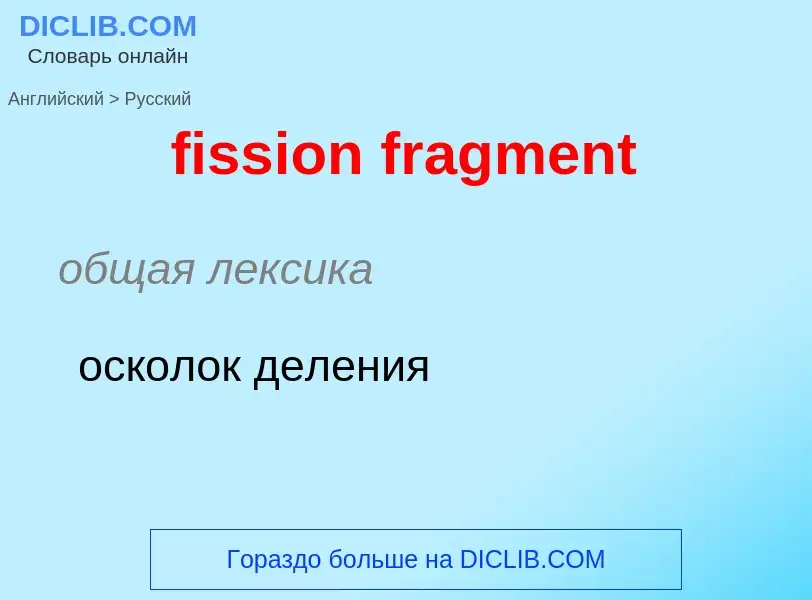Перевод и анализ слов искусственным интеллектом ChatGPT
На этой странице Вы можете получить подробный анализ слова или словосочетания, произведенный с помощью лучшей на сегодняшний день технологии искусственного интеллекта:
- как употребляется слово
- частота употребления
- используется оно чаще в устной или письменной речи
- варианты перевода слова
- примеры употребления (несколько фраз с переводом)
- этимология
fission fragment - перевод на русский
общая лексика
осколок деления
общая лексика
продукт деления
общая лексика
продукты ядерного распада
Определение
Википедия
Nuclear fission products are the atomic fragments left after a large atomic nucleus undergoes nuclear fission. Typically, a large nucleus like that of uranium fissions by splitting into two smaller nuclei, along with a few neutrons, the release of heat energy (kinetic energy of the nuclei), and gamma rays. The two smaller nuclei are the fission products. (See also Fission products (by element)).
About 0.2% to 0.4% of fissions are ternary fissions, producing a third light nucleus such as helium-4 (90%) or tritium (7%).
The fission products themselves are usually unstable and therefore radioactive. Due to being relatively neutron-rich for their atomic number, many of them quickly undergo beta decay. This releases additional energy in the form of beta particles, antineutrinos, and gamma rays. Thus, fission events normally result in beta and gamma radiation, even though this radiation is not produced directly by the fission event itself.
The produced radionuclides have varying half-lives, and therefore vary in radioactivity. For instance, strontium-89 and strontium-90 are produced in similar quantities in fission, and each nucleus decays by beta emission. But 90Sr has a 30-year half-life, and 89Sr a 50.5-day half-life. Thus in the 50.5 days it takes half the 89Sr atoms to decay, emitting the same number of beta particles as there were decays, less than 0.4% of the 90Sr atoms have decayed, emitting only 0.4% of the betas. The radioactive emission rate is highest for the shortest lived radionuclides, although they also decay the fastest. Additionally, less stable fission products are less likely to decay to stable nuclides, instead decaying to other radionuclides, which undergo further decay and radiation emission, adding to the radiation output. It is these short lived fission products that are the immediate hazard of spent fuel, and the energy output of the radiation also generates significant heat which must be considered when storing spent fuel. As there are hundreds of different radionuclides created, the initial radioactivity level fades quickly as short lived radionuclides decay, but never ceases completely as longer lived radionuclides make up more and more of the remaining unstable atoms.

